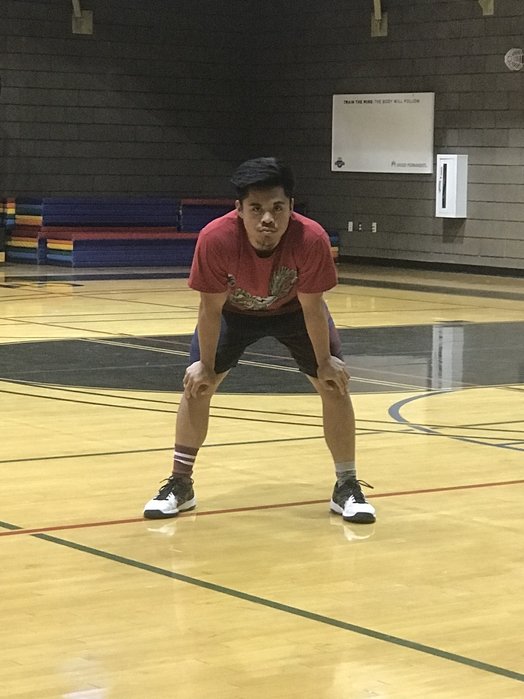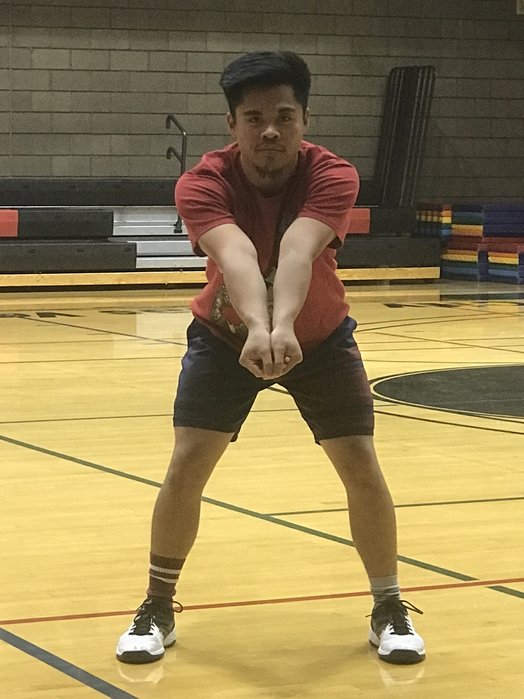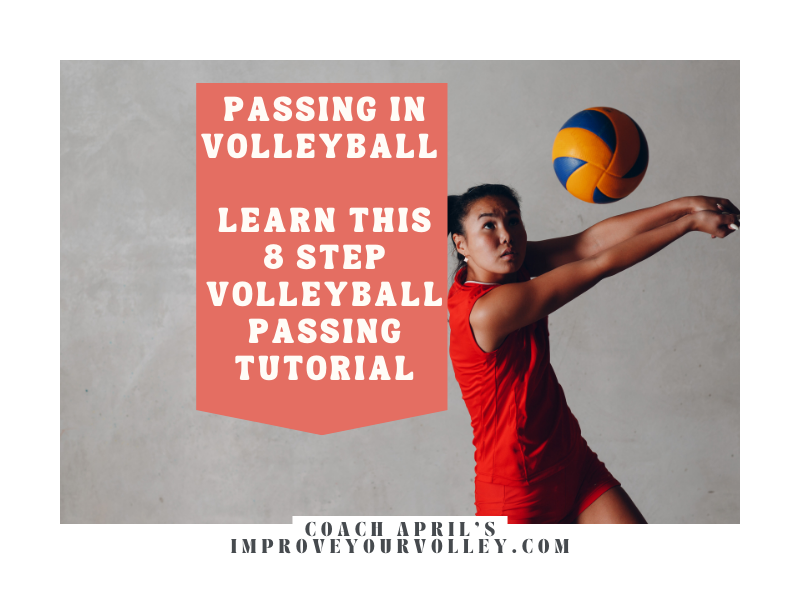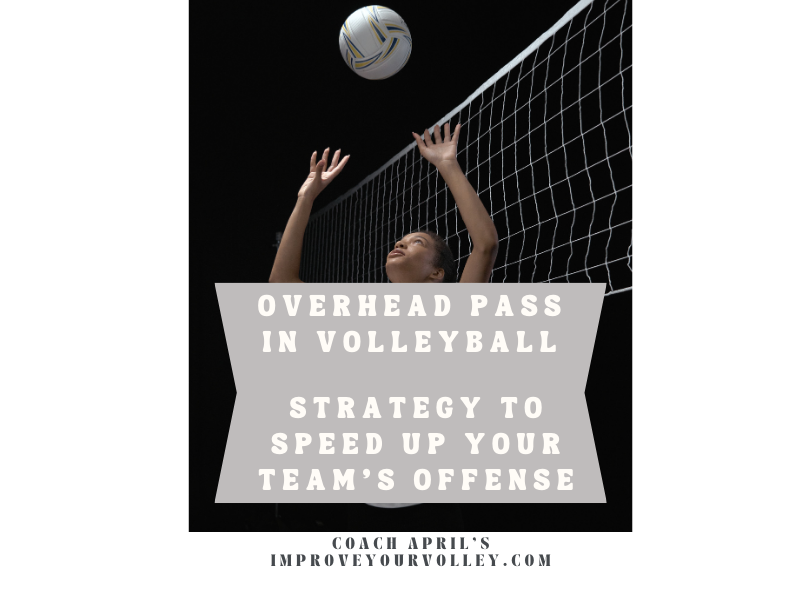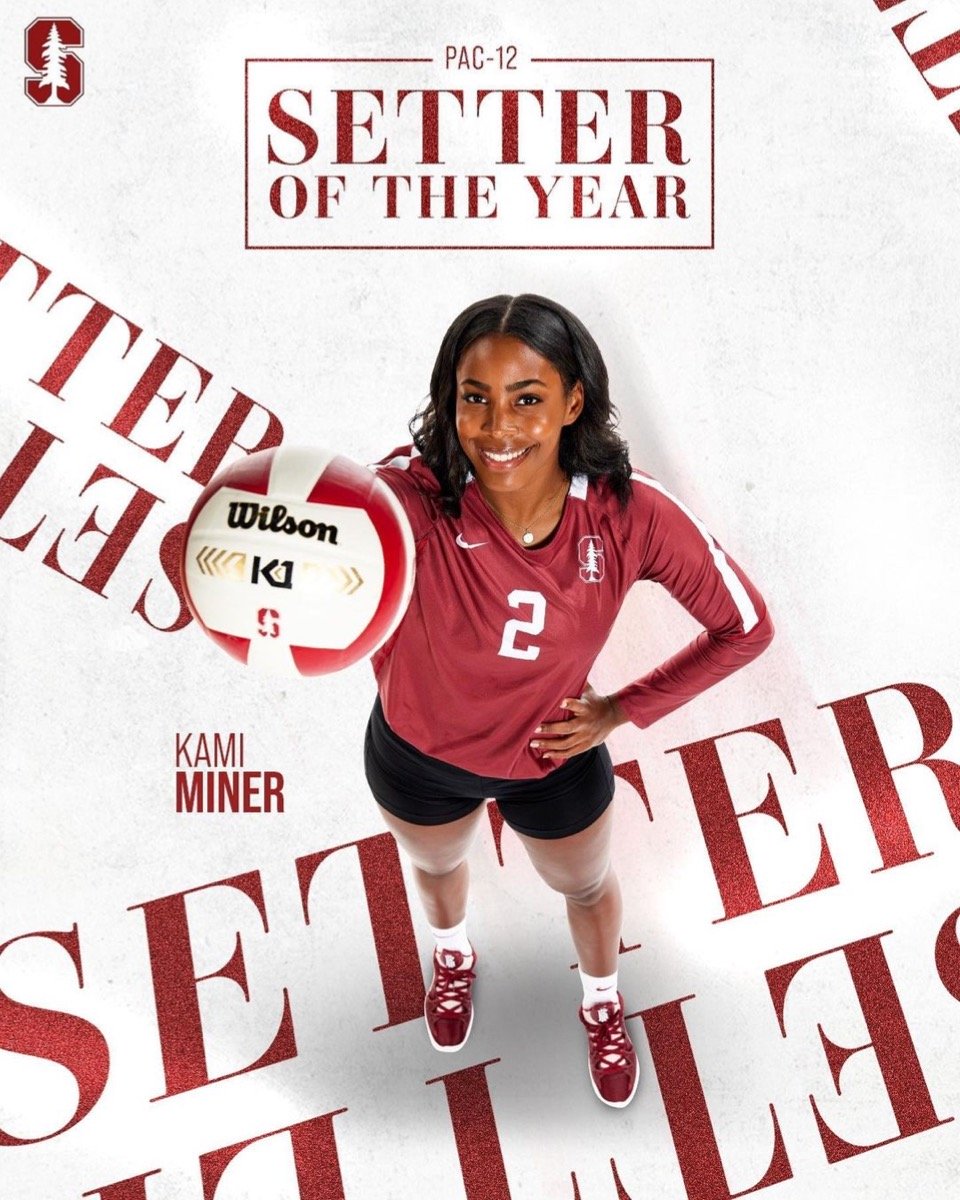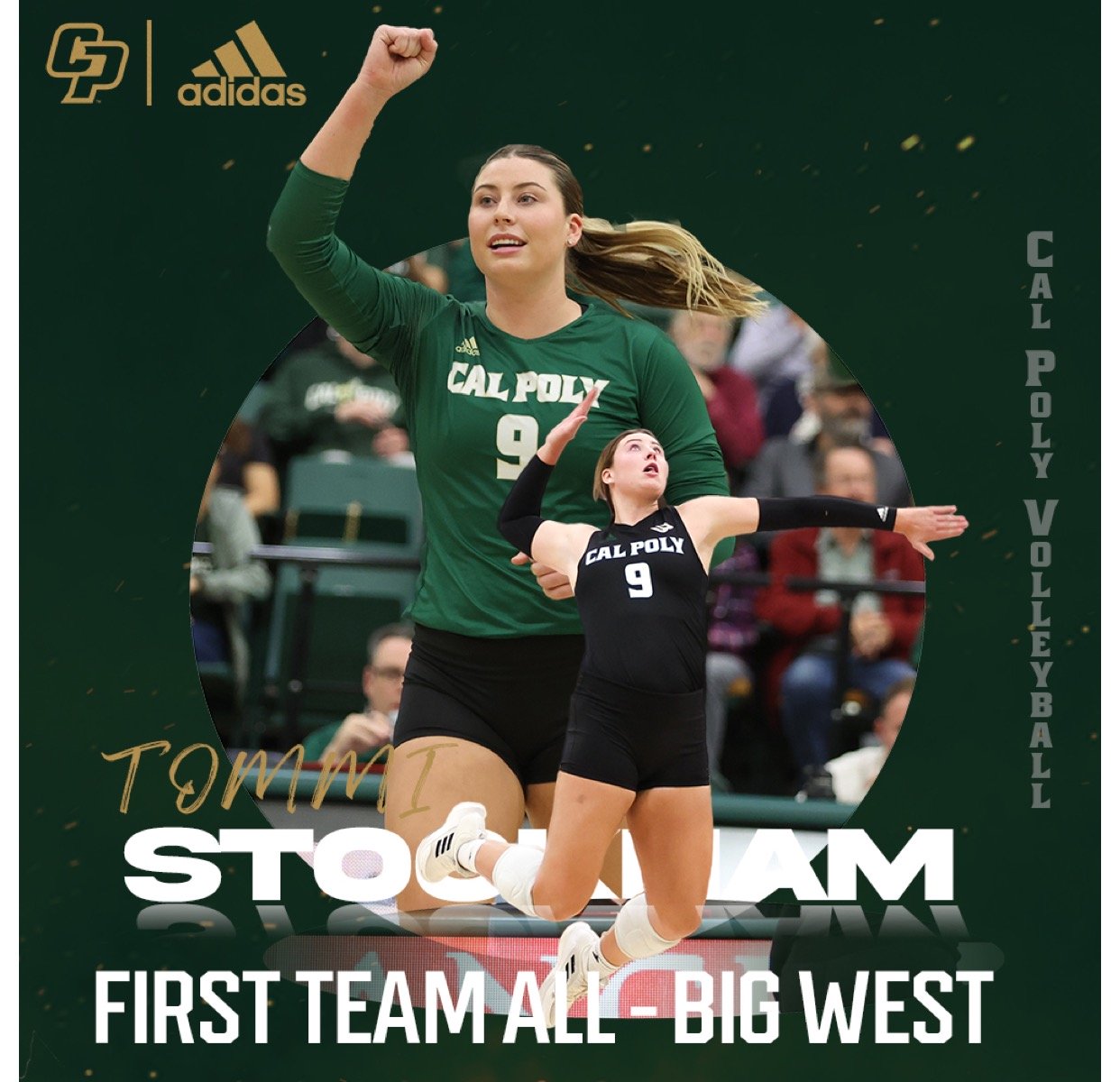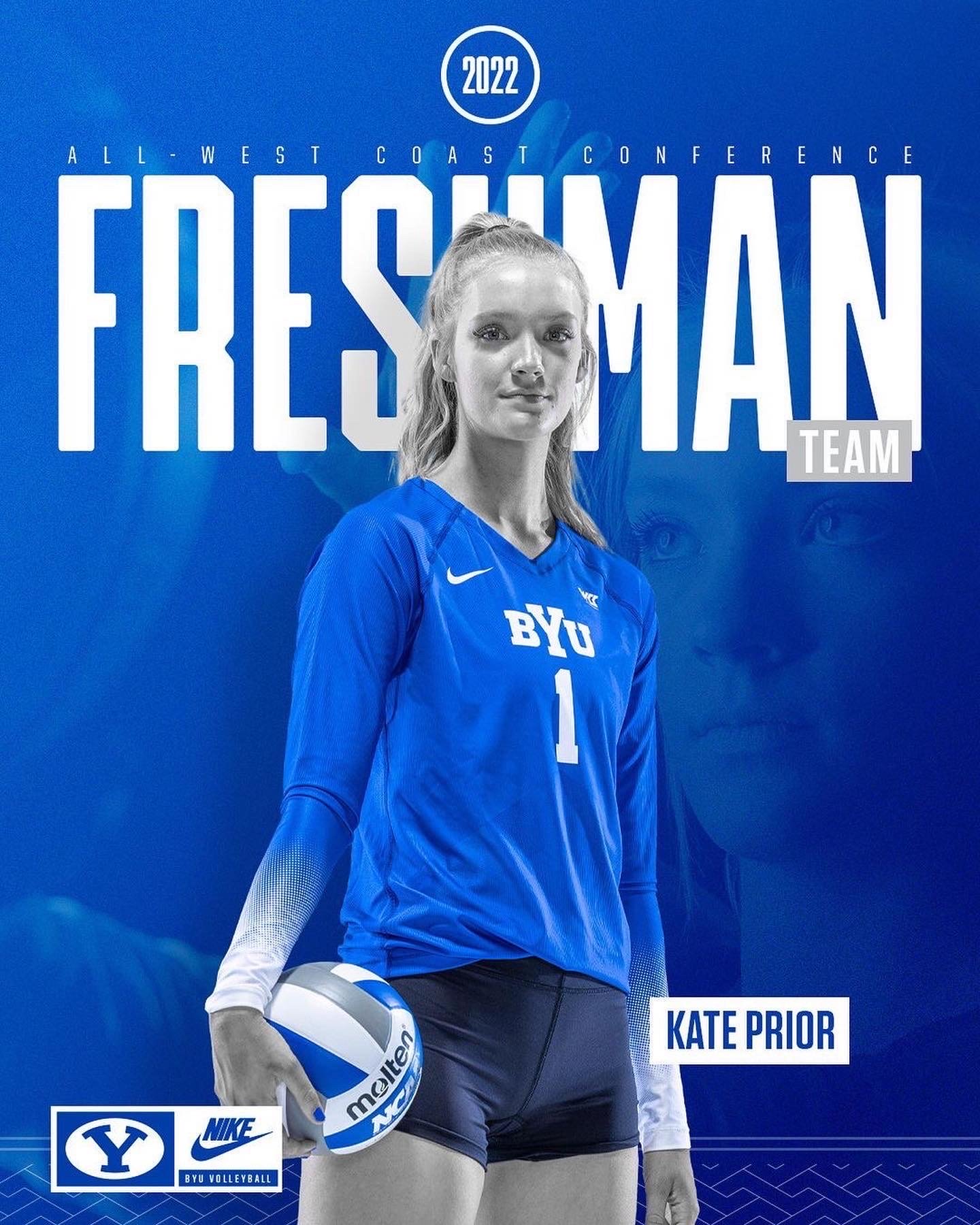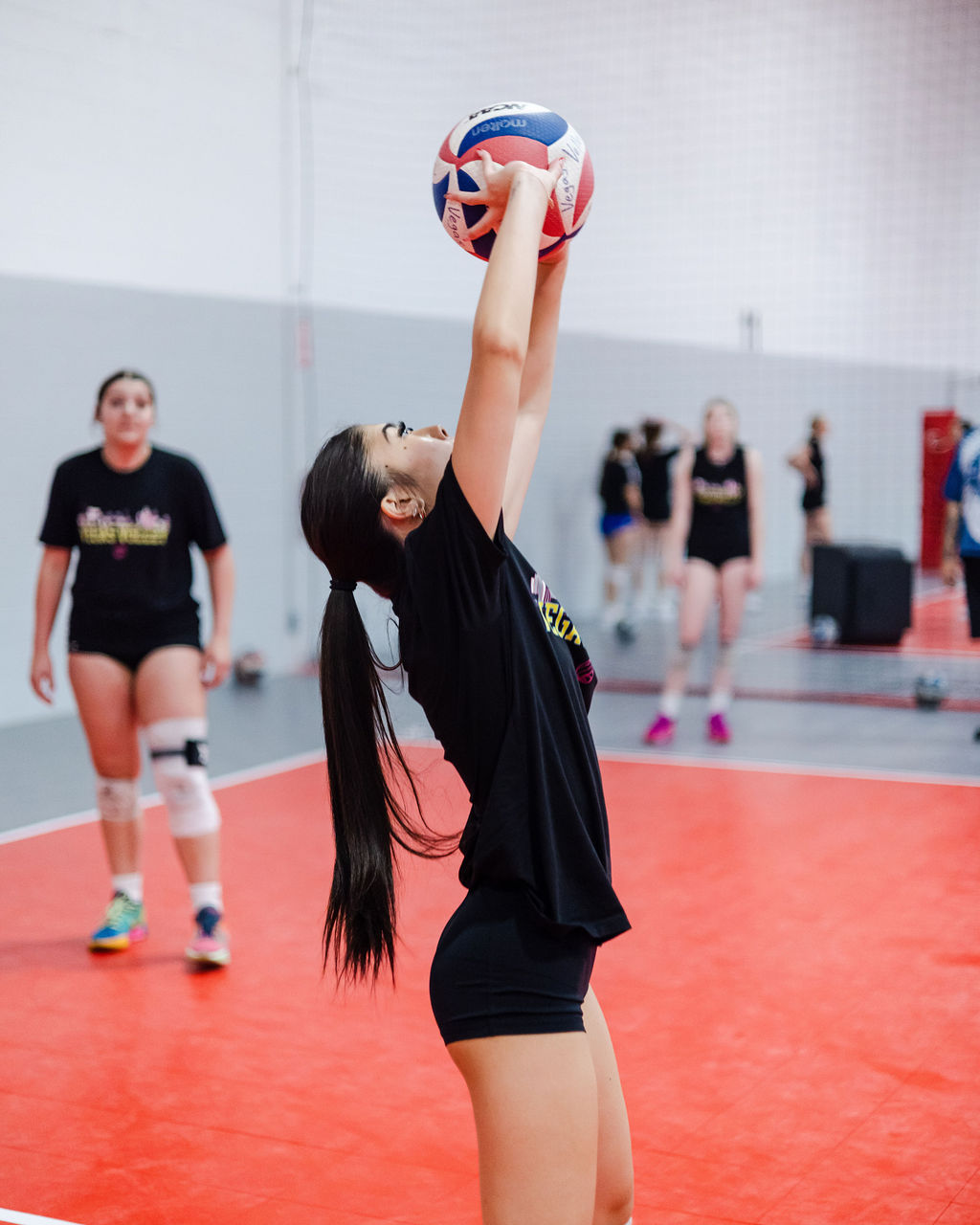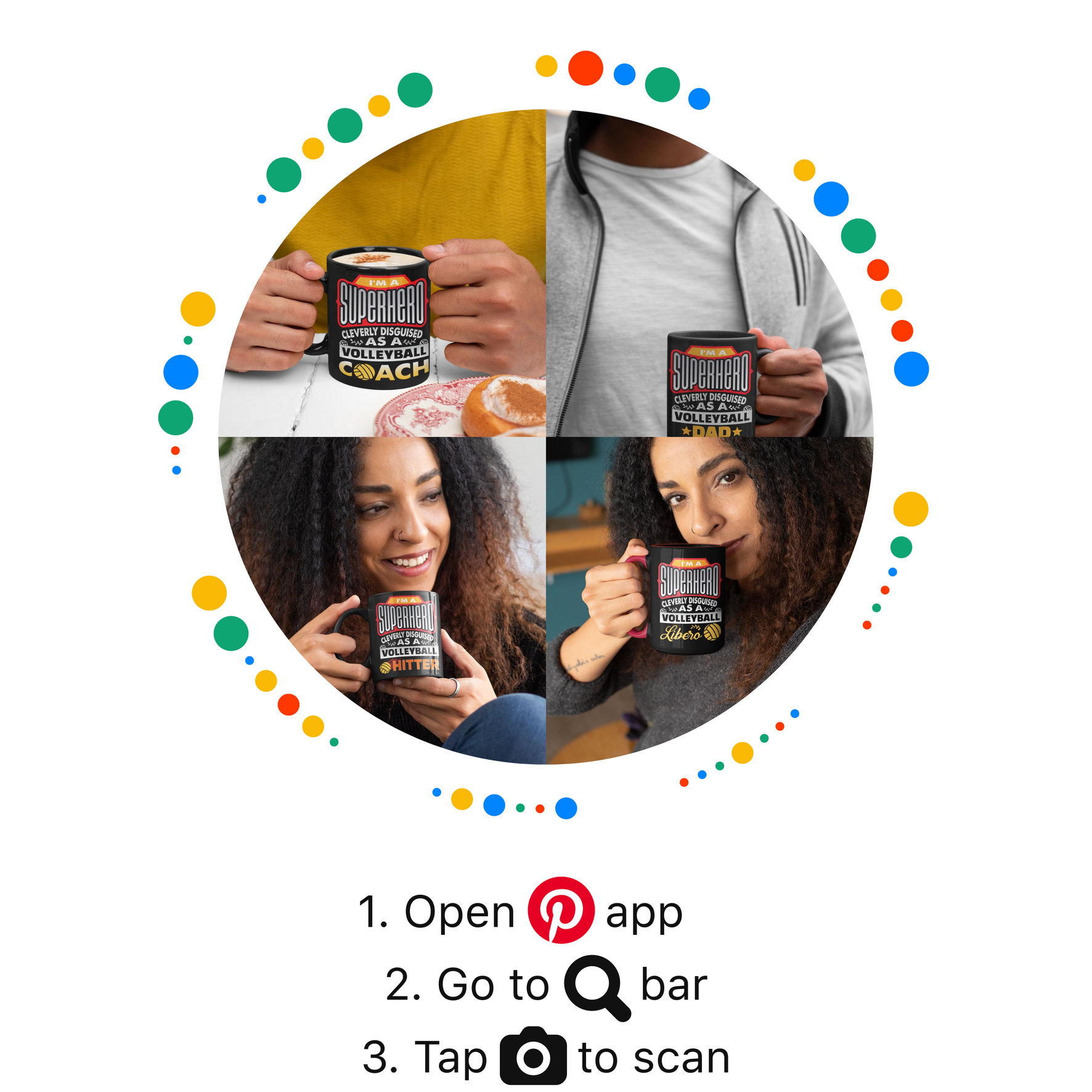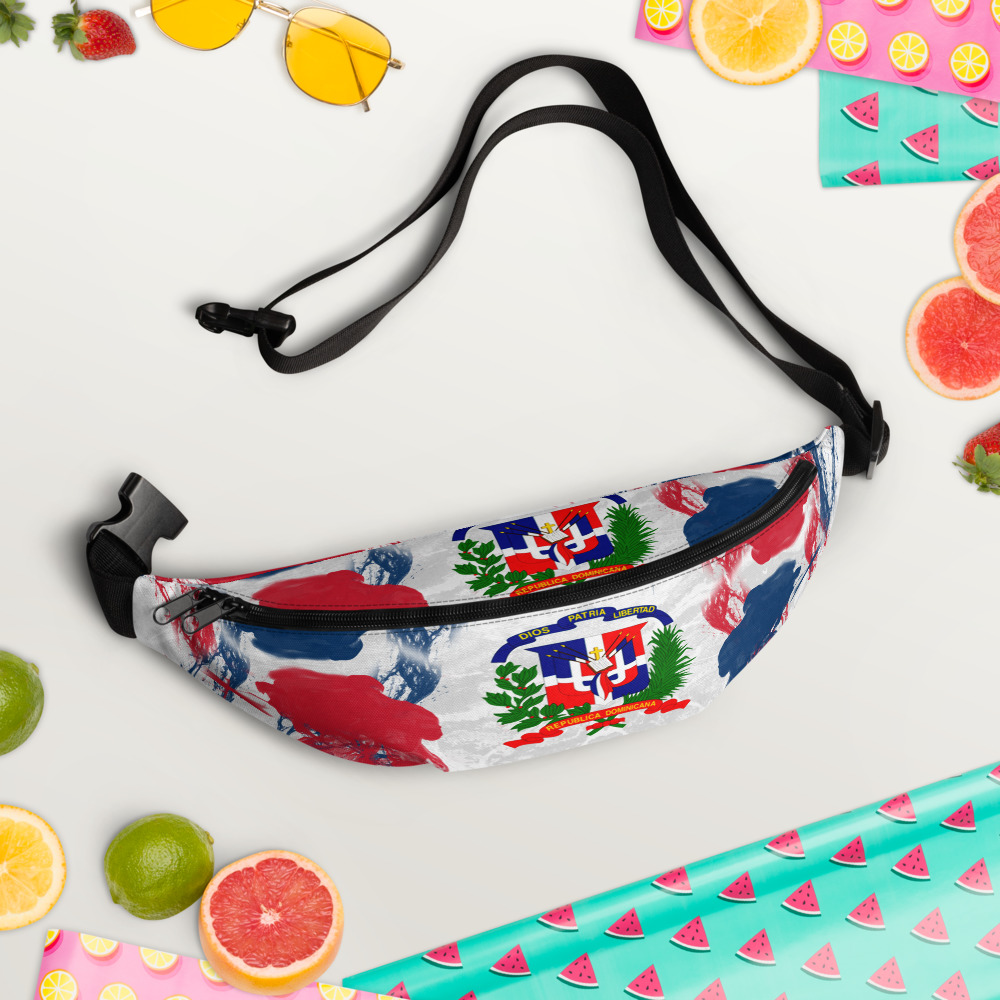- Improve Your Volleyball with Coach April
- Beginner Volleyball Drills You Can Do At Home To Improve Ball Control
- 5 Volleyball Beginner Passing Drills I Use To Improve Passing Skills
 Dear Volleyball Mom,
Do You Know What Sets My Private Volleyball Training Apart From Anyone In Vegas?
I invite You to read what my private volleyball training mission says before considering hiring me as a private volleyball coach because I'm not available for everyone.
Dear Volleyball Mom,
Do You Know What Sets My Private Volleyball Training Apart From Anyone In Vegas?
I invite You to read what my private volleyball training mission says before considering hiring me as a private volleyball coach because I'm not available for everyone.5 Volleyball Beginner Passing Drills I Use To Improve Passing Skills
These are 5 volleyball beginner passing drills you need to see that show you what to do and what not to do in order to learn how to improve your passing skills quickly.
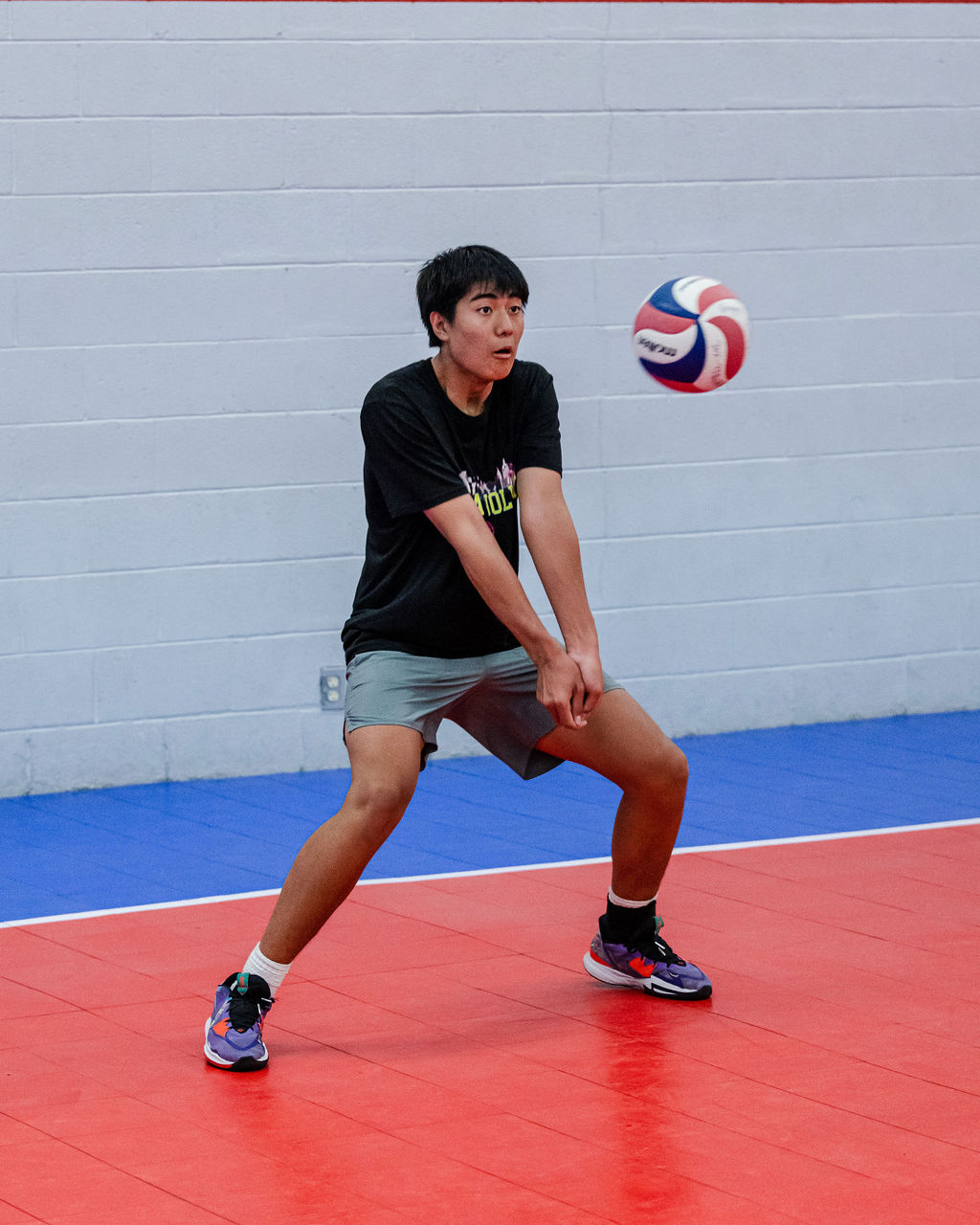 These volleyball beginner passing drills help you work on your "platform" which is where the ball contacts your forearms in order to transfer the ball to your intended target. You want your platform to be held stable and sturdy and not pass the level of your belly button once you've passed the ball.
These volleyball beginner passing drills help you work on your "platform" which is where the ball contacts your forearms in order to transfer the ball to your intended target. You want your platform to be held stable and sturdy and not pass the level of your belly button once you've passed the ball.Lets talk about these 5 volleyball beginner passing drills that focus on the techniques that freshmen and newbie players should remember to do or not do in order to improve their passing skills including
- avoid scooping your arms and winging your platform
- keep platform arms straight and don't bend elbows
- don't keep your arms too close to your body
- beat the ball to the spot dont time the ball
Volleyball Beginner Passing Drills Players Should Avoid Scooping or Swinging Their Platform When Passing
Many beginner passers think its a good idea to bend their elbows to scoop the ball to the target or they swing their platform when passing thinking that's what's going to help get the ball where they want it to go.
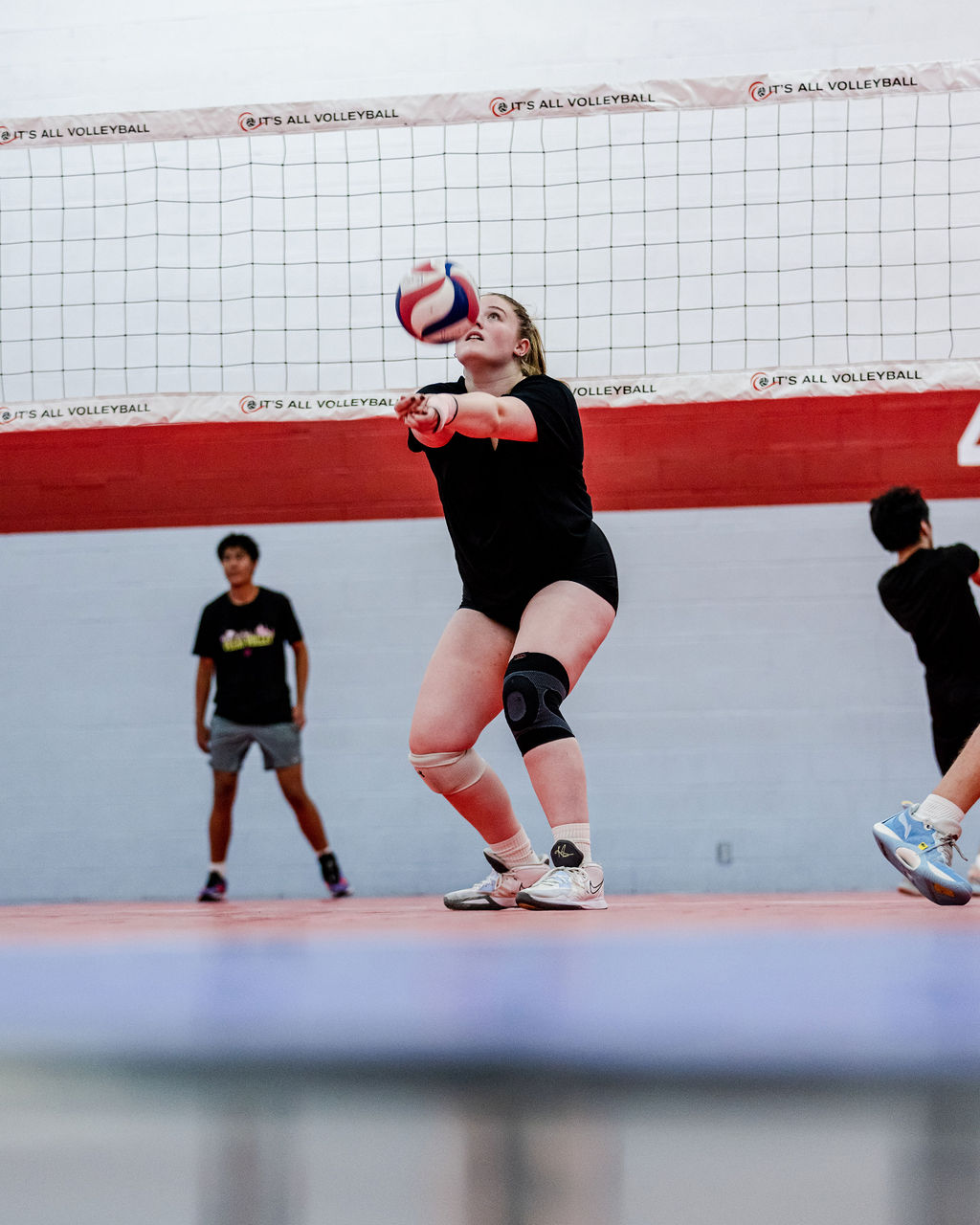 Volleyball Beginner Passing Drills Players Should Avoid Scooping or Swinging Their Platform When Passing
Volleyball Beginner Passing Drills Players Should Avoid Scooping or Swinging Their Platform When PassingYou want to keep from doing either of these two movements because you won't be able to control the ball especially when you come up against tougher faster serves.
Keep your elbows straight when passing no matter what...
Volleyball Beginner Passing Drills Players Should Keep Straight Platform Arms and Avoid Bending Elbows
When you form your platform with your forearms and thumbs pressed together side by side and pointed to the ground this keeps your elbows straight.
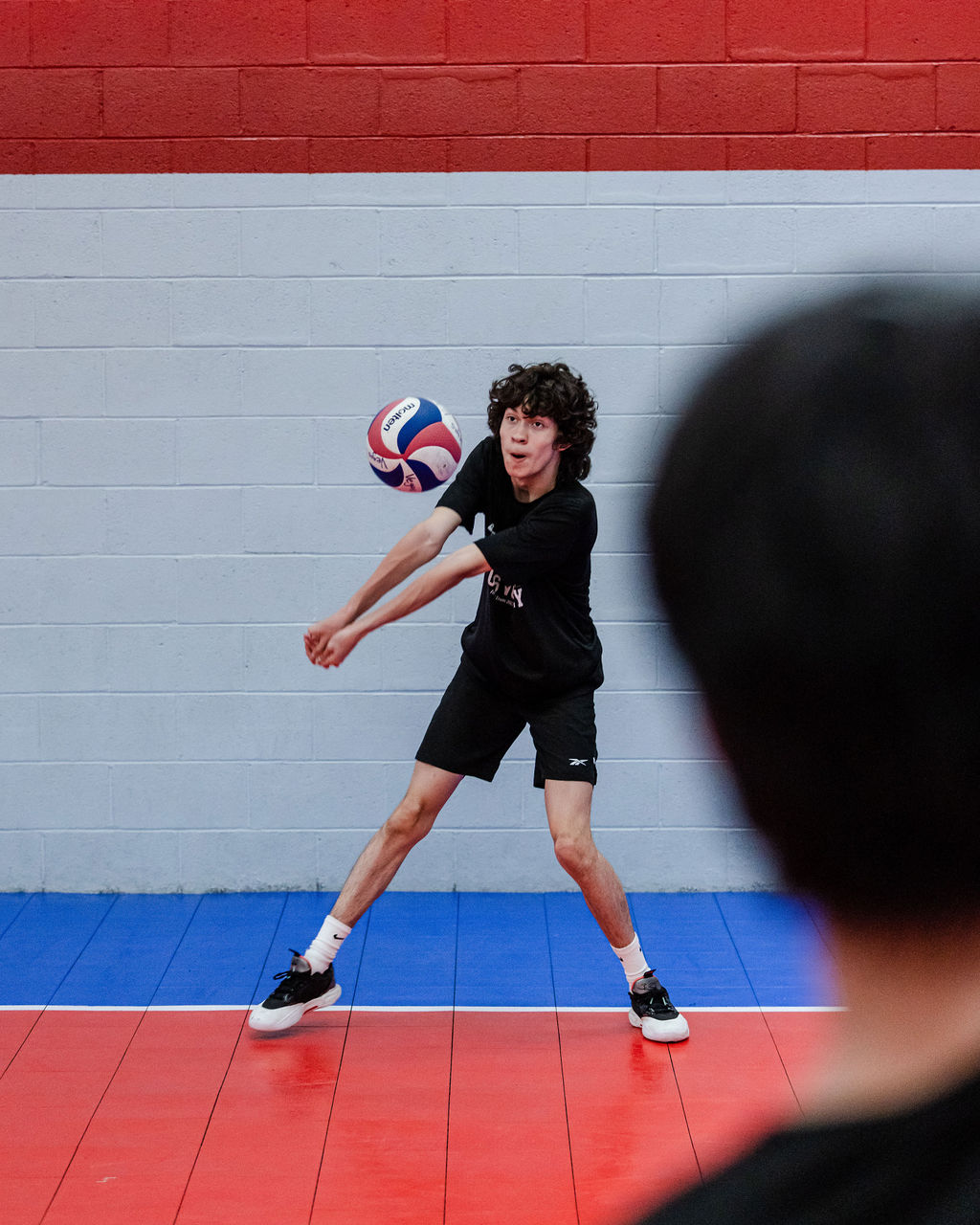 Volleyball Beginner Passing Drills Players Should Keep Straight Platform Arms and Avoid Bending Elbows
Volleyball Beginner Passing Drills Players Should Keep Straight Platform Arms and Avoid Bending ElbowsWhen passing you always want to keep your elbows straight and not bend them when you're contacting the ball.
Volleyball Beginner Passing Drills Players Should Avoid Swinging Their Platform When Passing
You want your platform to be held stable and sturdy and not pass the level of your belly button once you've passed the ball.
Volleyball Beginner Passing Drills Players Shouldnt Swing Arms Or Keep Their Platform Too Close To Their Body
When you keep your platform too close to your body you are forced to swing your arms when you contact the ball.
When using correct passing technique you want to avoid swinging your arms when you pass because you are in less control of the ball and you increase the probability of the ball going right back over the net (which called an overpass by the way) or staying close to you instead of being directed to the setter who's waiting at the net.
Watch how Aubrey moves her midsection out of the way deciding early which side of her body she is going to open up and get out of the ball's path while putting her passing platform outside of her body line in the path of the ball while keeping her elbows straight and inside shoulder angled towards the target.
Volleyball Beginner Passing Drills Players Should Beat The Ball And Work On Not Timing The Ball
As a passer you should work on
- reading the server's body language,
- armswing, then
- tracking the path of the ball
and getting enough information from what all these things are showing you so that once the ball is served you visually follow the path of the ball when its travelling to the net.
Then you move to where you see the ball is going to land once it gets to your side ...and move fast enough to that spot BEFORE the ball gets there.
That's what we call beating the ball to the spot....
If you get to the spot at the same time as the ball ..that's considered "late' because now you have to rush to pass the ball but if you're at the spot BEFORE the ball it gives you more time to get set up and create your perfect passing platform.
Coach April Chapple's Volleyball Passing Tips For Youth Volleyball Players
Frequently Asked Questions about the Volleyball Forearm Pass
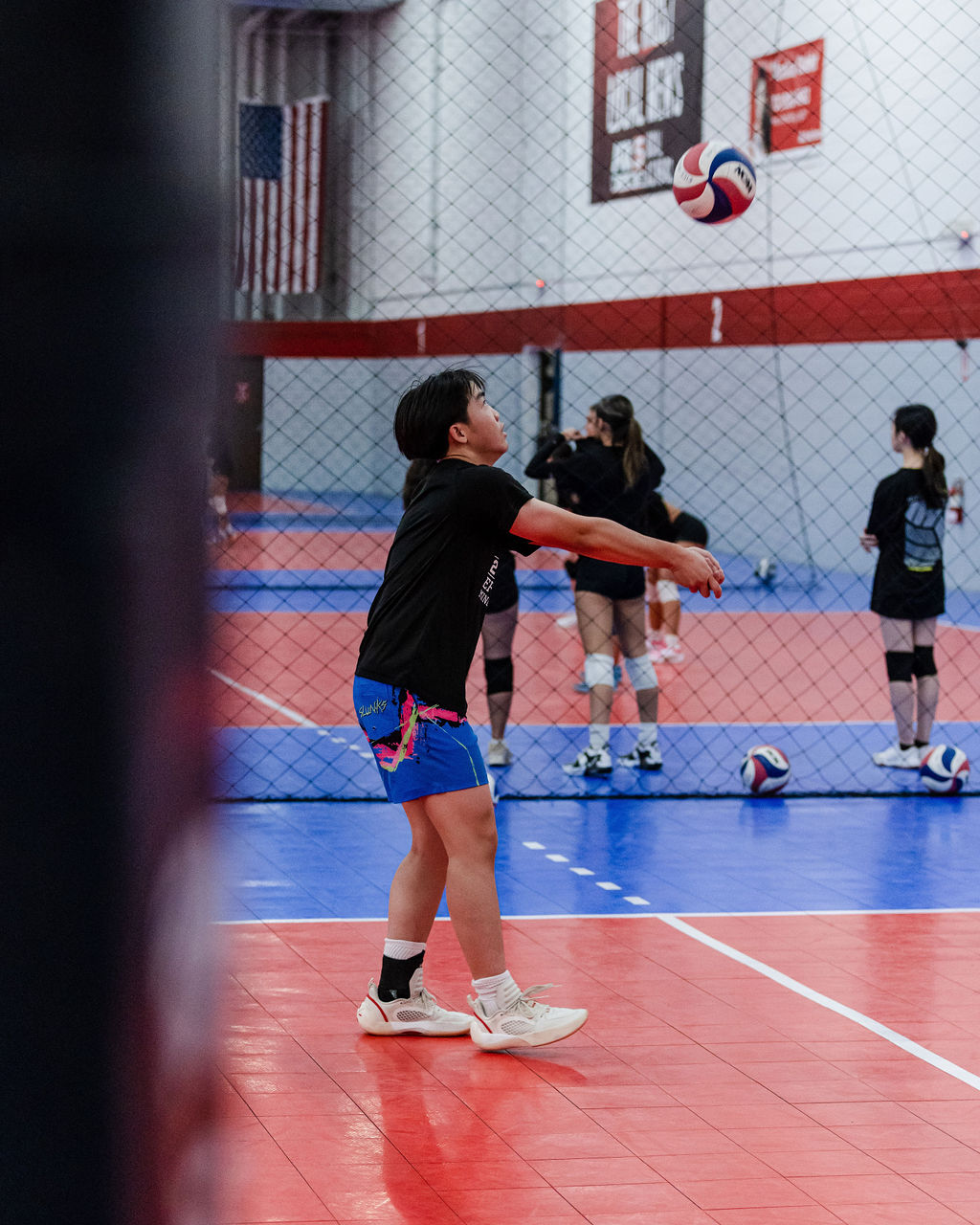 The forearm pass, also known as a bump or pass, is a fundamental skill in volleyball used to receive an opponent's serve or pass the ball to a teammate.
It involves using the forearms to control and direct the ball to the desired target.
The forearm pass, also known as a bump or pass, is a fundamental skill in volleyball used to receive an opponent's serve or pass the ball to a teammate.
It involves using the forearms to control and direct the ball to the desired target.Q: What is a forearm pass in volleyball?
A: The forearm pass, also known as a bump or pass, is a fundamental skill in volleyball used to receive an opponent's serve or pass the ball to a teammate.
It involves using the forearms to control and direct the ball to the desired target.
I like to work on this 3 person "Dodgeball" drill where the person in the middle has to choose which side to get their midsection out of the way of the oncoming ball that's being tossed at their chest before they present their passing platform with an angled shoulder positioned towards the target.
Q: How do I improve my forearm pass in volleyball?
A: Here are some tips to improve your forearm pass:
1. Keep your elbows straight to create a flat platform.
2. Track the ball from the server's hands to anticipate its path.
3. Keep your arms together when contacting the ball.
4. Keep both feet on the ground for better stability.
5. Quickly position yourself behind the ball with proper footwork.
Q: How important is forearm pass in volleyball?
A: The forearm pass is an essential skill in volleyball as it is often the first contact when receiving the opponent's serve.
A good forearm pass sets up the team's offensive play, allowing for better control and accuracy in setting up attacks. It is crucial for maintaining ball control and initiating successful plays.
Q: What equipment can help improve forearm passing?
A: Volleyball forearm passing sleeves are popular accessories used by players to protect their wrists, forearms, and elbows during passing and digging.
Brands like Mizuno and Nike offer volleyball passing sleeves (ad) that can enhance comfort and support while practicing or playing.
Q: Can I practice forearm passing on my own?
A: Yes, you can practice forearm passing on your own. You can perform passing drills against a wall, focusing on technique and accuracy.
Another option is to recruit a partner to practice passing back and forth, simulating game-like situations. Consistent practice and repetition will help improve your forearm passing skills.
Here are some volleyball drills for youth that you can do at home or in practice with a friend or teammate you are working out with at home or on their own or even during an open gym at your school.
Watch as Kenny and Jaylen work on controlling the ball to a consistent spot on the wall and then control the ball to themselves, then finally they control the ball to each other...repeatedly.
Q: Are there any specific drills I can do to improve my forearm passing?
A: Yes, here are a few drills you can try:
1. Wall Passing Drill:
Stand facing a wall and practice passing the ball against it. This helps improve technique and control.
2. Triangle Drill:
Set up three cones in a triangle shape and practice moving quickly between them while passing a ball. This improves footwork and positioning.
3. Pass and Move:
Set up a designated area and practice passing the ball with a partner while moving around. This simulates game-like movement and improves passing accuracy under different conditions.
My tips on How to do wall passing drills...
Volleyball wall passing and wall setting drills can be done daily at home with a goal of at least 250 - 500 reps of various drills to keep your
- passing or setting technique,
- angled platform work,
- ball contacting skills and
- control of the ball.....extremely sharp!
Pick a brick, a specific spot on the wall or mark a big X in chalk on a wall or use a basketball net or backboard ...no matter what you decide to use as your target... anybody walking by.... should be able to see exactly where the spot is that you are aiming for EVERY...single....time .
Do 3 to 5 sets of 100... five feet from the wall ....then side step two feet and repeat. Then step back and repeat.
Complete 300 to 500 passing repetitions
Q: What should I do if I struggle with forearm passing accuracy?
A: To improve your forearm passing accuracy, focus on the following:
1. Proper hand contact:
Make sure to contact the ball with the forearms, slightly above the wrists, creating a solid platform.
2. Eye on the ball:
Keep your eyes on the ball as you pass it, maintaining visual contact throughout the entire process.
3. Controlled body position:
Maintain a balanced and athletic stance with your feet shoulder-width apart, knees slightly bent, and weight forward.
Q: How can I generate more power in my forearm pass?
A: To generate more power in your forearm pass, consider the following techniques:
1. Use your legs:
Engage the muscles in your legs and core to generate power from the ground up. Bend your knees and use a slight upward thrust to add strength to your pass.
2. Follow-through:
After making contact with the ball, continue your arm extension forward and slightly upward. This follow-through motion adds power and accuracy to your pass.
3. Timing and anticipation:
Anticipate the ball's trajectory and aim to meet it at the highest point of its arc for maximum power.
Q: What should I do if the ball is coming at me too fast for a forearm pass?
A: If the ball is coming at you too fast for a forearm pass, you can use an alternative technique called the overhead pass or "volley." In this method, you use your fingertips to guide the ball, creating a controlled trajectory. However, mastering forearm passing should still be a priority, as it is the most effective and commonly used pass in volleyball.
Q: How can I develop good forearm pass footwork?
A: To develop good footwork for forearm passing, try the following:
1. Quick first step:
React quickly as soon as you see the server make contact with the ball. Take a small, explosive step towards the anticipated ball trajectory.
2. Shuffle and adjust:
Maintain proper balance and shuffle your feet to adjust your position as needed. This allows you to align yourself behind the ball and maintain stability.
3. Practice positioning drills:
Set up cones or markers on the court to simulate different serve placements. Practice moving quickly and efficiently to each marker, assuming the correct forearm pass position behind it.
Do You Follow Me on Pinterest?
 Private or semiprivate volleyball indoor/sand lessons are an excellent way for young Las Vegas high school volleyball players to quickly improve their individual skills through a private or semi-private coaching experience.
These lessons are conducted by former pro volleyball player, former USA Volleyball High Performance instructor and Evaluator and Tstreet Vegas 18s head Coach April Chapple on a weekly basis.
Sign up now!
Private or semiprivate volleyball indoor/sand lessons are an excellent way for young Las Vegas high school volleyball players to quickly improve their individual skills through a private or semi-private coaching experience.
These lessons are conducted by former pro volleyball player, former USA Volleyball High Performance instructor and Evaluator and Tstreet Vegas 18s head Coach April Chapple on a weekly basis.
Sign up now!Follow me on Pinterest Volleybragswag to improve your game even faster!
I share alot of individual, partner and easy-to-do volleyball serving drills we do in class with my followers.
Many of these volleyball practice drills you can do at home by yourself or try at your next practice with your teammates.
If you're a B team or JV player trying to make varsity next year...your goal should be to complete 1000 reps a day of at least three of the basic skills on your own...volleyball passing, serving and setting should be at the top of the list.
Volleyball Beginner
Passing Drill:
Where Do You Go From Here?
Your three options are:
- You can learn more about Drills by visiting the Related Links below.
- Follow the suggested reading on our Sitemap page Learning How To Play (Sitemap)
- Or visit the pages in the How to Play Volleyball section in the drop down menu at the top of the page to get started.
SUSCRIBE
To My Email Newsletter Below!
From Lady Vol to Legend: Coach April Produces Powerful Passionate Players...is that you?
What Are You Looking For?

Hi there!
Thanks for stopping by. Hope you learned something today that will help you reach your volleyball goals.
Be sure to subscribe to my email newsletter so you can learn more each week!
Stay strong! Stay motivated!
-Coach April

SUSCRIBE
to my email newsletter below!
Vegas Volleyball's Unsung Heroes: Celebrating Moms with Peace Love Volleyball Shirts
Ready to energize your volleyball mom journey?
Subscribe to my 'Producing Powerful Passionate Peaceful Players' email list above on ImproveYourVolley.com.
You'll receive energy-boosting tips, exclusive insights from me, Coach April Chapple on maintaining momentum in volleyball.
Let's power up the Vegas volleyball scene together!
Recent Articles
-
How To Set A Volleyball A Basic Setter Guide To Good Setting Technique
Apr 01, 25 04:28 PM
Want to be a good volleyball setter? I show you how to set a volleyball the way I teach my club players, focusing on hand and body placement and ball contact. -
Volleyball Coach Gifts Inspired By 2021 Tokyo Olympics World Flags
Mar 16, 25 02:59 AM
My volleyball coach gifts are a collection of 30 countries flag inspired designs where volleyball is the primary sport and with teams in the Tokyo 2021 Olympics -
Are Fanny Packs Back? Dive Into The World Of Color With Volleybragswag
Mar 16, 25 02:53 AM
Are fanny packs back? Fanny packs are trending! Fanny packs are cool again in 2024. Why stick to the basics when you can take your style game a notch higher?



